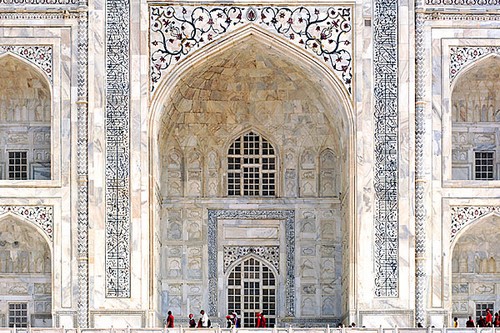10 Facts About Taj Mahal
Top 10 Interesting Facts About Taj Mahal Secrets Of Tajmahal 1.Shah Jahan and Mumtaz Mahal Mughal Emperor Shah Jahan had the Taj Mahal built in memory of his third wife, Mumtaz Mahal, whom he held precious. Mumtaz Mahal was giving birth to the fourteenth child of the emperor, and she died in the process. This was in 1631. Legend has it that Shah Jahan, who considered his empress an integral part of his life, was broken after her death, and within just a few months, his hair and beard grew snow white, such was the terrible impact of the demise upon him. 2.Time and amount The construction of the Taj Mahal was begun in 1632, a year after the death of Empress Mumtaz. The construction was completed in the year 1653, which means that it took approximately 22 years to complete this astounding piece of architecture. At that time, the estimated construction cost was a whopping sum of Rs.
32 million, which, when considered in terms of today’s value of money, would be something way above $1 billion. 3.Construction and employees The architect behind all the magic was Ahmed Lahauri.
Facts About Taj Mahal India
10 Facts that suggests Taj Mahal was built on a Shiva Temple by Aayush An ivory-white marble mausoleum on the south bank of the Yamuna river in the Indian city of Agra where around 8 million people visit every year and at times there are over 50 thousand people visiting on a single day is non-other than one of the seven wonders of the world, The Taj Mahal. 10 Interesting facts about Taj Mahal. The Taj Mahal is recognised, the world over, as a symbol of love. It was commissioned by the Mughal emperor, Shah Jahan, of India to be the tomb of his much loved second wife Mumtaz Mahal and it is now one of the Seven Wonders of the World, a UNESCO world heritage site and one of the most visited tourist attractions in the whole of India.

10 Interesting Facts About Taj Mahal
He put more than 20,000 people into building the Taj, including labourers, stonecutters, painters, embroidery artists, calligraphers, and many others. But, how were the stones and materials required for the construction of the mausoleum transported? Well, elephants were employed to do the task, and amazingly, there were more than 1,000 of the majestic creatures employed. 4.Materials Used The magnificent edifice is bounded on three sides by red stone walls. It is constructed completely of white marble. Online bijoy to unicode converter.
The emperor had marbles of the best quality brought from Rajasthan, Afghanistan, Tibet and China. But this was probably not enough for the emperor.
It is believed that more than 28 different types of precious and semi-precious stones, including the striking lapis lazuli, were inlaid into the marble.  Now we know where all the money went. 5.Inscriptions The Taj Mahal being the dedication and homage of Mumtaz Mahal, it has calligraphy all over the interior and exterior, which, among other patterns and holy inscriptions, also has calligraphy on the tomb that identifies and praises Mumtaz Mahal.
Now we know where all the money went. 5.Inscriptions The Taj Mahal being the dedication and homage of Mumtaz Mahal, it has calligraphy all over the interior and exterior, which, among other patterns and holy inscriptions, also has calligraphy on the tomb that identifies and praises Mumtaz Mahal.
Another interesting fact is that there are 99 names of Allah found on the sides of the actual tomb as calligraphic inscriptions. After all, Shah Jahan did envision Mumtaz’s home in the paradise, and Taj Mahal was that imagination coming to life. 6.The Perfection that Taj Mahal Is The Taj Mahal is one of the world’s most symmetrical structures.
10 Facts About The Taj Mahal
Its four sides are perfectly identical, built using the principles of self-replication and symmetry in geometry and architecture, thus creating a mirrored image on either side. But, to keep the male tomb larger than the female, the two tombs inside are unequal in size. The four minarets were prudently built slightly outside of the plinth, so that if they fell, they would fall outside, and not upon the main structure. 7.Changing Moods of the Taj Mahal Did you know that the Taj Mahal dose different colours at different times of the day?